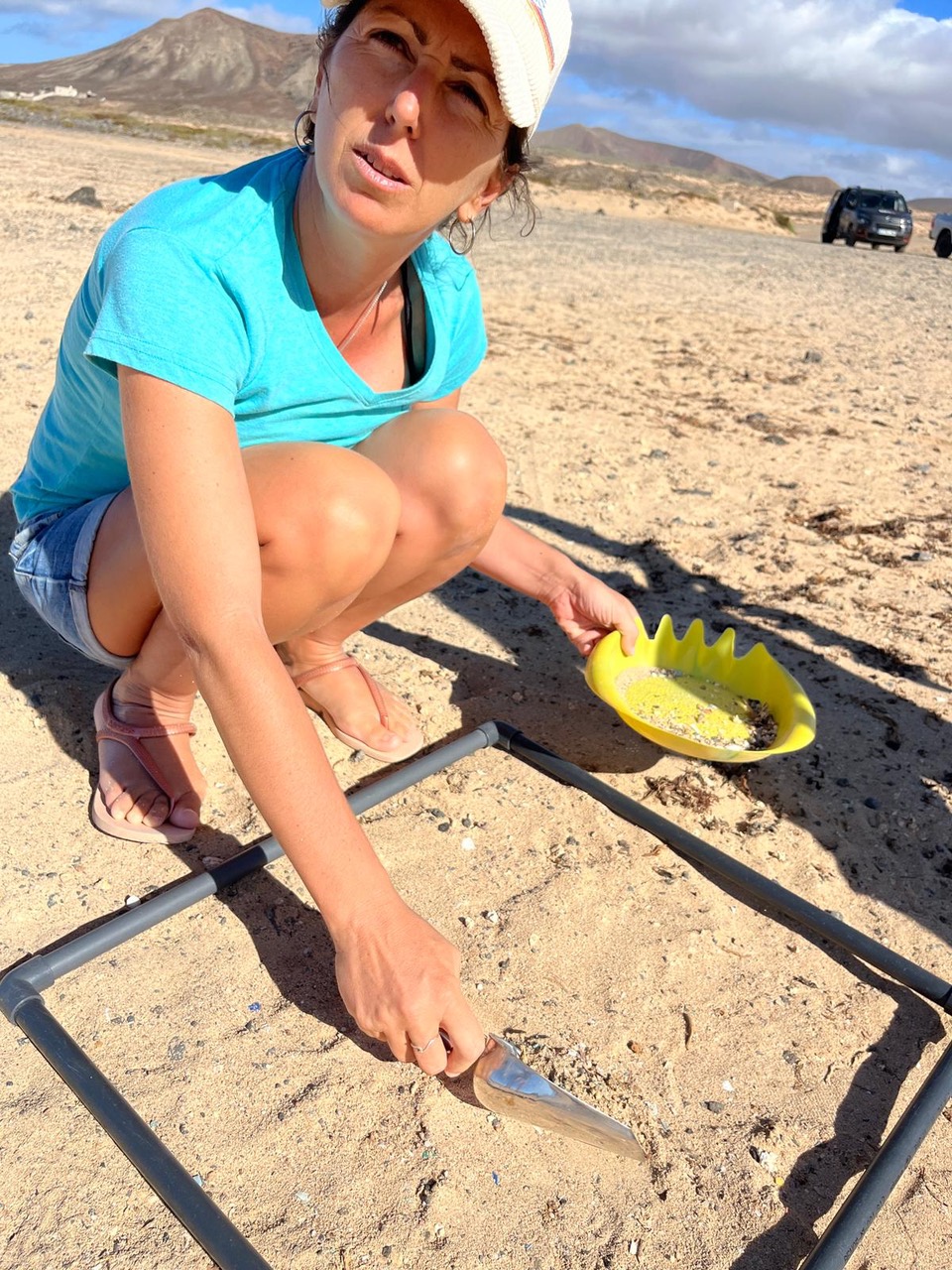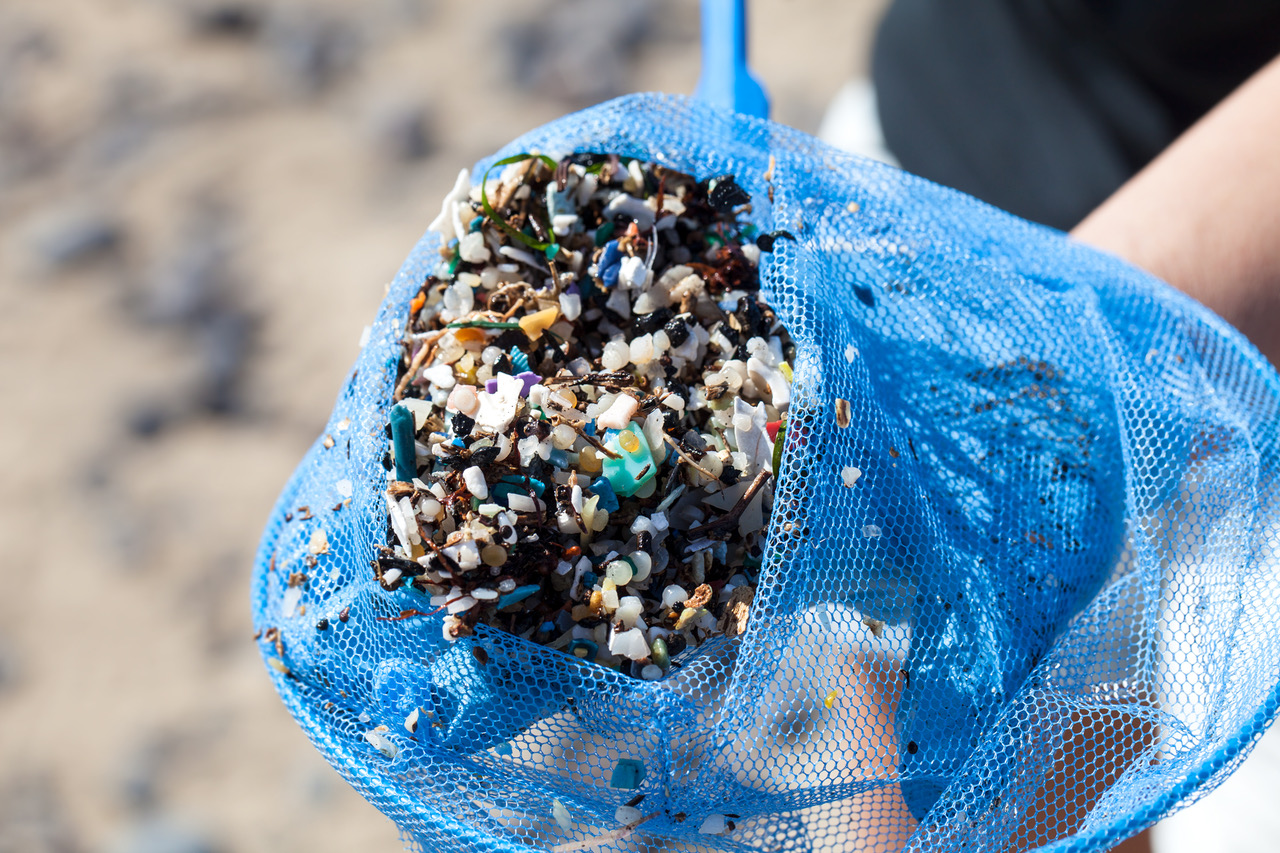Several investigations led by the EOMAR group of the University of Las Palmas de Gran Canaria (ULPGC), have already confirmed the presence of pellet discharges for years in the archipelago due to the influence of marine currents, through sampling carried out on several islands.
 Famara beach, Lanzarote, where microplastics and pellets can be observed. Author: Alicia Herrera.
Famara beach, Lanzarote, where microplastics and pellets can be observed. Author: Alicia Herrera.
The research group of Ecophysiology of Marine Organisms (EOMAR) of the ECOAQUA Institute of the University of Las Palmas de Gran Canaria warns of the damage to marine ecosystems caused by the dumping of plastic pellet from one of the containers lost by the ship Toconao this past December 8, 40 nautical miles off the portuguese coast and about 20 kilometers from the border of Galicia.
In the event that remains of the pellet spill were to reach the Canary Islands, this arrival would occur in approximately one year's time. This is an assessment made by experts from the Physical Oceanography and Applied Geophysics group (OFYGA), also attached to the ECOAQUA institute, who have based their approximation on statistics of the dragging of this type of waste in the sea currents that lead from the point of the spill to the islands.
"The Canary Islands, as oceanic islands, are exposed to the arrival of all kinds of marine litter, on a regular basis, unfortunately. Pellets are no exception, and it is not uncommon to find this type of plastic waste on the sand of the beaches or deposited among the rocks. It is likely that some of the pellets from the Galicia spill will end up reaching the coasts of the Canary Islands, but by then it will be just another piece of marine debris to which we are sadly becoming accustomed," says Miguel Borja Aguiar, researcher at OFYGA.
That is why, according to advice from the Institute for Research in Sustainable Aquaculture and Marine Ecosystems (ECOAQUA), now that the first samples are beginning to arrive on the Galician and Asturian coasts, a month after the incident occurred, it is essential to have all the information about these pellets: what type of plastic they are made of, whether they contain additives, and whether their data sheet contains any specifications in this regard. In addition, it is important to remove them quickly from the coast, as they arrive, thus preventing them from mixing with sand and algae, which would make their gathering much more difficult.
"Pellets represent a very serious environmental problem, since they can remain in the environment for a long time, between 50 and 70 years, until they gradually degrade into smaller particles. The danger for marine organisms is, on the one hand, the physical damage that can be caused by their ingestion, and on the other, the damage caused by the chemical pollutants associated with them," says Alicia Herrera Ulibarri, biologist and doctor in Oceanography, who belongs to the EOMAR research group.
Presence of pellets in the Canary Archipelago
As far as the Canary Islands are concerned, the EOMAR group of the ECOAQUA institute has for years already detected the presence of pellets on the beaches of the islands. "We can highlight, as an example, a sampling of microplastics carried out in October 2015 in Famara Beach, located in the municipality of Teguise, in Lanzarote, where it was found that more than 40% of the sample was formed by pellets," says Alicia Herrera.
 Alicia Herrera in a microplastics collection in Fuerteventura, in Caleta del Barco, near El Cotillo.
Alicia Herrera in a microplastics collection in Fuerteventura, in Caleta del Barco, near El Cotillo.
Pellets are raw material for the manufacture of plastic objects and, in general, they are spherical or lentil-shaped, approximately 5 millimeters in diameter, and are white or transparent in color, although they can come in different colors, according to EOMAR.
They can be made of different plastic polymers, mainly polyethylene (PE) or polypropylene (PP), which are the plastics most frequently used by industry; and they reach the sea or beaches through containers that fall into the water, as has happened now, or through waste leaks in industries, which causes them to reach rivers and ravines, and through these, the coasts.
"In other studies carried out on pellets collected from three eastern Canary Islands: Gran Canaria, Lanzarote and La Graciosa, selected for their different degrees of anthropogenic pressure, which is the influence of tourism or proximity to urban environments, we found more than 80 types of associated contaminants, including pesticides, flame retardants and UV filters," says the researcher, who is contracted as a researcher of excellence by the Viera y Clavijo program of the ULPGC, for competitive scientists with an outstanding career.
On the other hand, in experiments carried out with fish fed with feed and 10% of microplastics and pellets, which the ECOAQUA institute group collected from the beaches and which had associated chemical pollutants, it has been found that these chemical pollutants passed to the liver of the fish.
In this sense, due to the high danger of the dumping and the arrival of these pellets to the Spanish coasts, EOMAR praises the work that institutions such as Good Karma Projects have been doing for years, through their denunciation and divulgation.
ECOAQUA Institute Press Office: Beatriz Díaz – beatriz@mandarinacomunicacion.es – 620410871


